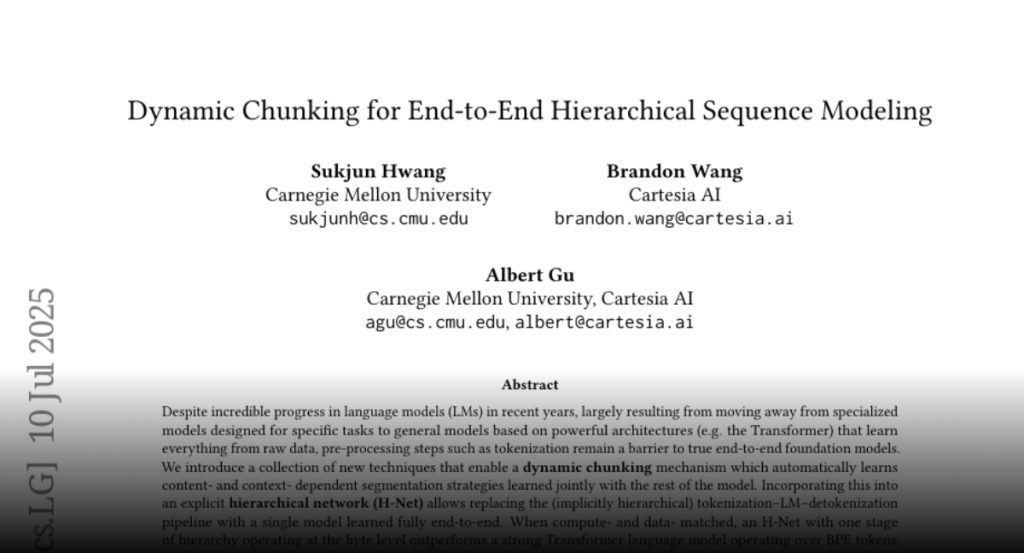Hierarchical networks replace traditional tokenization pipelines by dynamically learning segmentation strategies, achieving better performance and scalability across various languages and modalities.
Despite incredible progress in language models (LMs) in recent years, largely
resulting from moving away from specialized models designed for specific tasks
to general models based on powerful architectures (e.g. the Transformer) that
learn everything from raw data, pre-processing steps such as tokenization
remain a barrier to true end-to-end foundation models. We introduce a
collection of new techniques that enable a dynamic chunking mechanism which
automatically learns content — and context — dependent segmentation
strategies learned jointly with the rest of the model. Incorporating this into
an explicit hierarchical network (H-Net) allows replacing the (implicitly
hierarchical) tokenization-LM-detokenization pipeline with a single model
learned fully end-to-end. When compute- and data- matched, an H-Net with one
stage of hierarchy operating at the byte level outperforms a strong Transformer
language model operating over BPE tokens. Iterating the hierarchy to multiple
stages further increases its performance by modeling multiple levels of
abstraction, demonstrating significantly better scaling with data and matching
a token-based Transformer of twice its size. H-Nets pretrained on English show
significantly increased character-level robustness, and qualitatively learn
meaningful data-dependent chunking strategies without any heuristics or
explicit supervision. Finally, the H-Net’s improvement over tokenized pipelines
is further increased in languages and modalities with weaker tokenization
heuristics, such as Chinese and code, or DNA sequences (nearly 4x improvement
in data efficiency over baselines), showing the potential of true end-to-end
models that learn and scale better from unprocessed data.

